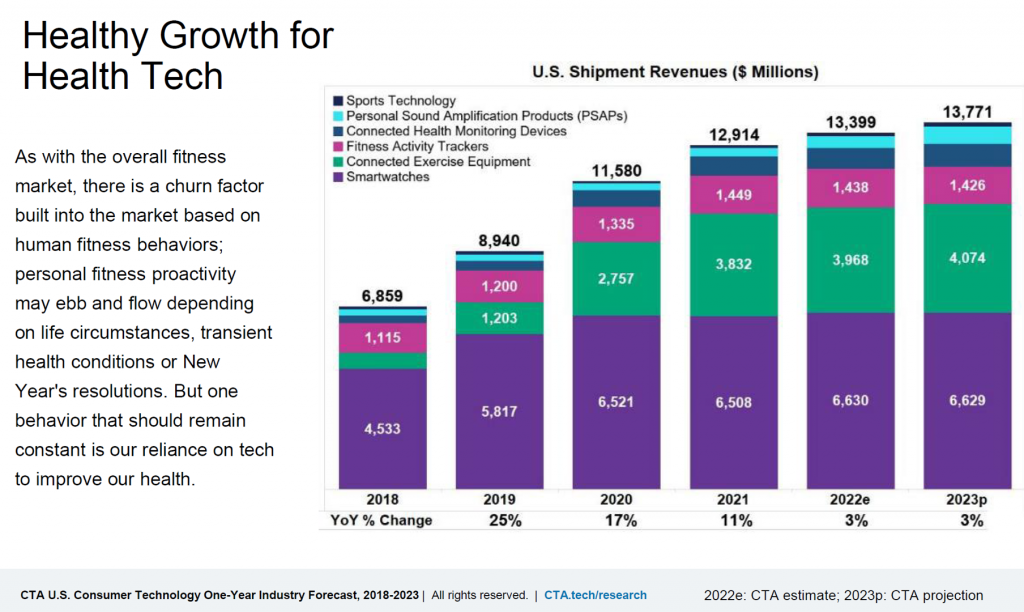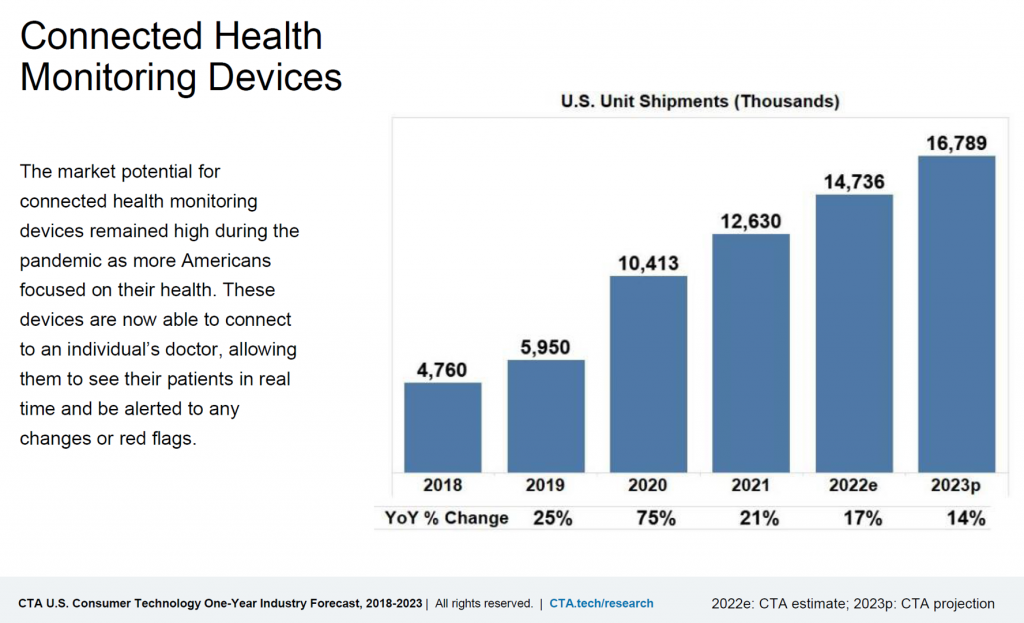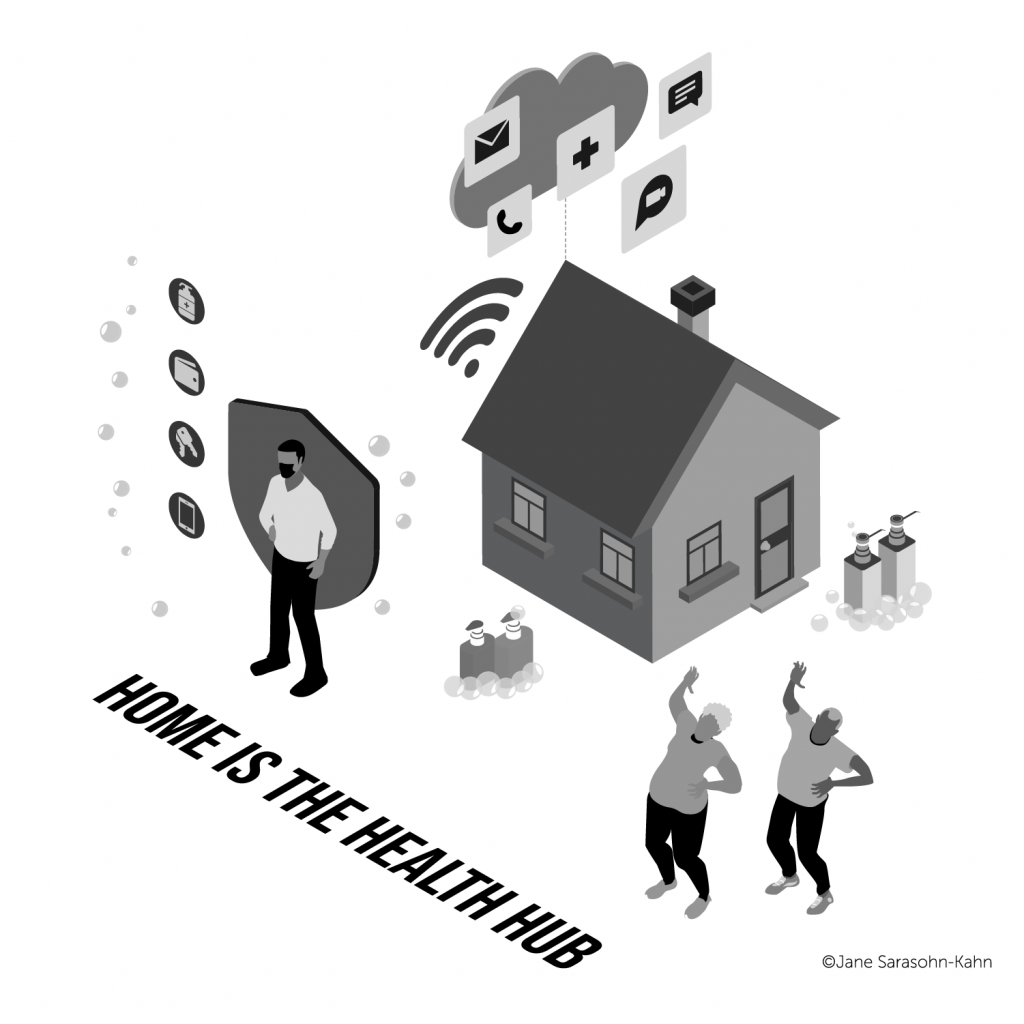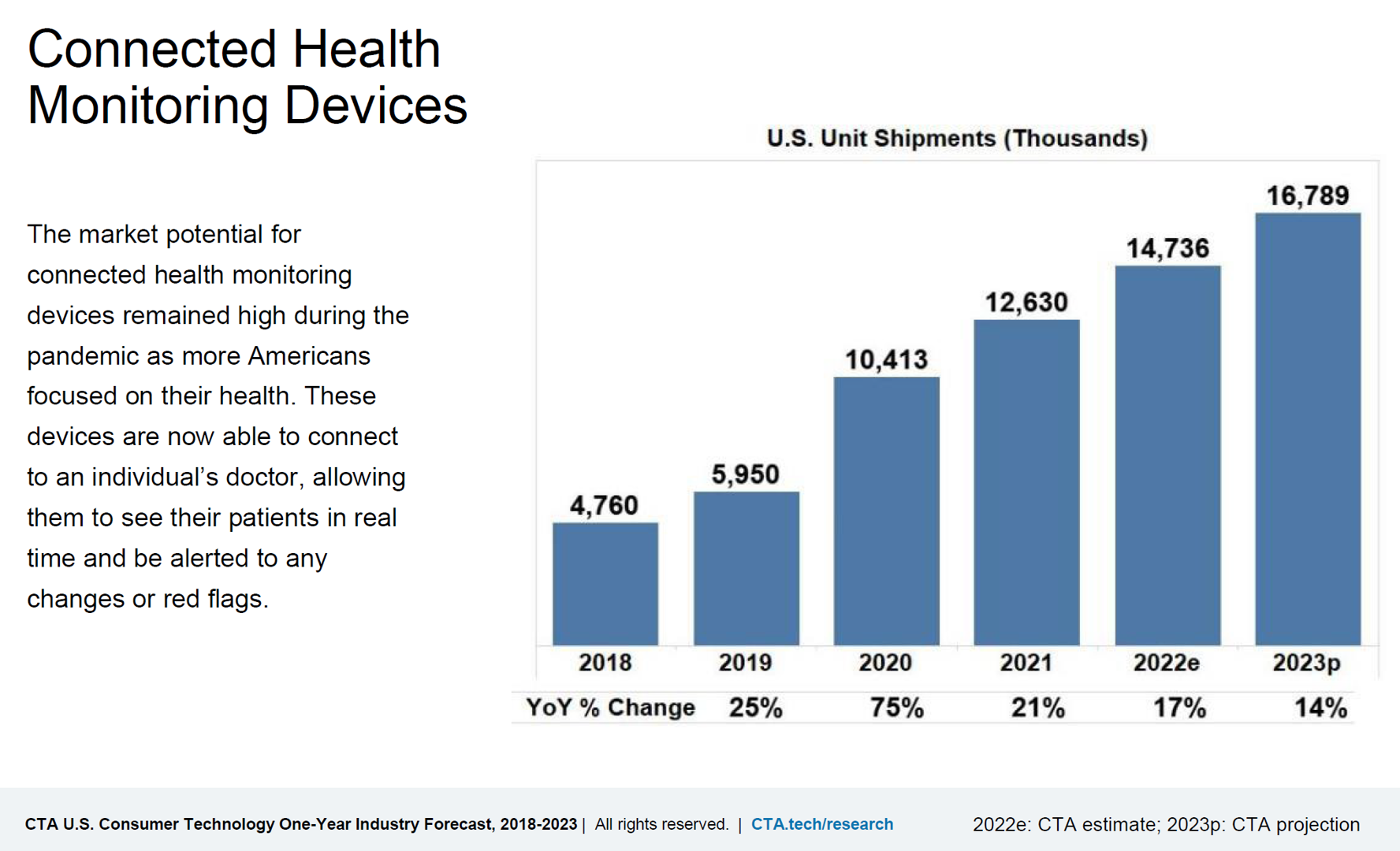Supply chain challenges, inflation, and plummeting consumer economic sentiment are setting the stage for a decline in consumer electronics revenues for 2022. However, there will be some bright spots of growth for consumer tech spending, for 5G smartphones, smart home applications, gaming, and health technologies, noted in the Consumer Technology Association’s CTA U.S. Consumer Technology One-Year Industry Forecast, 2018-2023.

Underneath the overall industry spend of $503 billion, a 0.2% drop from 2021, CTA expects software, gaming, video and audio streaming spending will grow by 3.5% and hardware to fall by 1.4% this year.
With that macro context, CTA expects “healthy growth for health tech,” illustrated in the first chart, with over $13 bn in U.S. shipment revenues estimated for 2022 at a growth rate of 3% over 2021 and the same expected in 2023.
The largest segments in health tech are for smartwatches, connected exercise equipment, and fitness activity tracks whose revenues may have hit their max last year. Watch for the emerging segment of over-the-counter hearing aids to ratchet up in growth, with the FDA’s final ruling expected soon.

Driving health tech growth in the forecast are connected health monitoring devices: think blood pressure and blood glucose meters which tie to mobile apps via smartphones.
This category will see double-digit growth of 17% in 2022 (estimated) and 14% next year, CTA forecasts, with an average unit price of about $50.
About 1 in 5 U.S. households will have adopted connected health monitoring devices this year (21%), CTA gauges. Household penetration will be 34% for smartwatches in 2022, 26% for fitness activity trackers, and 16% for connected exercise equipment, the report quantifies.
Health Populi’s Hot Points: Demand for consumer-facing connected health technology is being driven by both health citizens themselves as well as the larger healthcare ecosystem of providers, health plans, and employers.
The COVID-19 pandemic accelerated the trend already in place in 2019 for greater self-care at home and closer-to-home in community health touchpoints like grocery stores, retail pharmacies, and even barbershops — see this news about Gymshark’s opening of the Deload barbershop in greater London to provide men a safe space to talk about mental health, for example.
Pertinent to CTA’s larger stakeholder community, areas of the home such as connected kitchens and cooking at home, smart bathrooms, the growing sleep category, and even connected cars are all taking on health and wellness features to meet the evolving home as peoples’ personal health hubs.
From the healthcare supply side, more digital front doors are opening to patients for primary care, accessing prescription drugs from home, and for mental health services accessed through virtual services — one of the digital health segments that has sustained investment in the first half of 2022 according to Rock Health’s latest analysis.
Consumers facing inflation on the home front for food and gas will face household budgets crowding out other spending — which includes health care costs in the family budget.
GWI’s latest report on The Consumer Dilemma: Health and Wellness observed that “thriftiness is back with a bang, as consumer optimism gives way to worry.”
Consumers will continue to turn to health care hacks at home, many with the goal of avoiding spending down their high-deductible or avoiding medical care due to cost. But even for health tech, the consumer will be seeking value, transparency, trust, and support when spending that eroding household dollar on health care at home well into 2023





 I am so grateful to Tom Lawry for asking me to pen the foreword for his book, Health Care Nation,
I am so grateful to Tom Lawry for asking me to pen the foreword for his book, Health Care Nation,  I love sharing perspectives on what's shaping the future of health care, and appreciate the opportunity to be collaborating once again with Duke Corporate Education and a global client on 6th May. We'll be addressing some key pillars to consider in scenario planning such as growing consumerism in health care, technology (from AI to telehealth), climate change, and trust -- the key enabler for health engagement or dis-engagement and mis-information. I'm grateful to be affiliated with the corporate education provider
I love sharing perspectives on what's shaping the future of health care, and appreciate the opportunity to be collaborating once again with Duke Corporate Education and a global client on 6th May. We'll be addressing some key pillars to consider in scenario planning such as growing consumerism in health care, technology (from AI to telehealth), climate change, and trust -- the key enabler for health engagement or dis-engagement and mis-information. I'm grateful to be affiliated with the corporate education provider  Thank you FeedSpot for
Thank you FeedSpot for